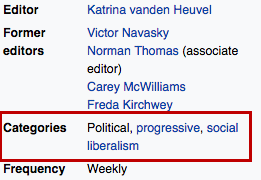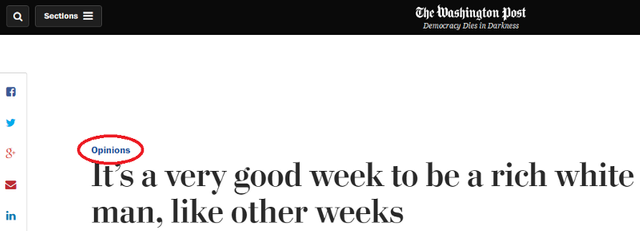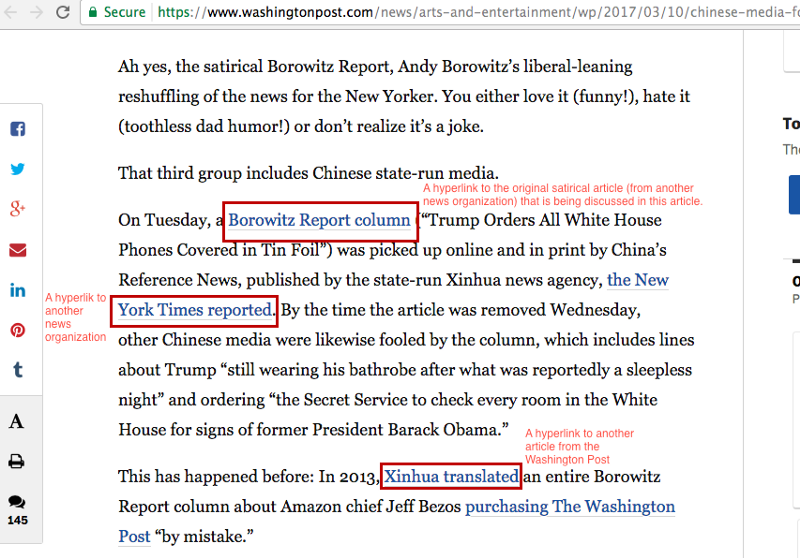Steps to Evaluate the News (or any other information you find on the Internet)
In the Internet age, we think that everyone can find any information they need. Google exists; it can answer all of our questions, right? Where else would we go to look for information BUT Google?
And it’s true. The Internet makes finding information easy. Once, information was scarce and not so readily accessible. You found information in books, in newspapers, and on the news. Now anyone and everyone can instantly access information anytime from the tiny computer they keep in their pocket.
But the Internet also makes information creation much easier. Case in point, I’m publishing this through Medium. There is no editorial process with Medium. No one critically evaluated the information that I am sharing. Alas, that burden falls to the reader.
In this world where information is abundant and easy to create and share, finding information is not a challenge. The challenge is in finding good information. To do so, we must evaluate the information we find to make sure it is accurate, factual, and credible. Here are 7 steps to help you evaluate the news (or any other information you find on the Internet):
Check the date. It’s not uncommon to see old articles cycle back through social media. If you click on a post on Facebook, take a moment to check the date. Some things are still useful, but if information is out of date, it can be accidentally misrepresentative, or even intentionally misleading.
See what you can learn about the publication. Is it a newspaper? A magazine? A personal blog? A corporate website? A non-profit website? Does it have a very strong opinion? Who runs the website where you found the information? Who is the owner? What are his/her political views? Does the content reflect those views? Some news publications are more left-leaning, some are more right-leaning. Some are WAY in left field. Some are WAY in right field. There are several charts to help you get situated in the media field. But when in doubt, Google it. This is likely the one time you will hear a librarian encouraging you to use Wikipedia, but they often have political positions for publications listed, which can be an easy reference point. If it’s not a source you have heard of, look it up.
A screenshot from The Nation’s Wikipedia page, which can help you see that it is a progressive/liberal leaning publication.
- Determine what kind of source you have. What is the purpose of the source? Sure you now know it’s in a newspaper, and you know which way it leans, but is it an op-ed? Is it satire? Is it a letter to the editor? In the world of Facebook, we usually only see the title and the source before we click and jump in to read (or not!). Make sure you take a moment to figure out what kind of source it is. The White House recently shared a satirical article in the Washington Post in its daily news blast under the impression that it was a real news article. Be careful out there, y’all.
Often, just above the headline, you can see what type of article it is, specifically if it’s an op-ed or satire. But this isn’t true 100% of the time, since every site is different.
See what you can learn about the author of the article. See what else this journalist, blogger, writer, etc. covers. Search the publication’s archives. Google them. Look them up on Twitter. Or if it’s an op-ed, try to determine what their expertise is, or what their angle is. If you can’t find an author, or you can’t find any information about the author, be wary.
Look for references. Not APA citations like when you were in school. But in our hyperlinked world, articles will often link to other articles that explain, elaborate upon, or back up what they are writing about or support a claim they are making. These are great because they increase your news consumption transparency (and effortlessly direct you to more information). Especially for current political news, keep an eye out for references as they will help direct you to primary sources (see #6 below). If you don’t see any hyperlinks, take a moment to search on your own for the information the article discusses.
References are especially valuable when they link to outside sources.
Search across the aisle. Vary your media intake. It’s common for sites to want to increase their own clicks, so even if they have hyperlinked references in the article they might only link to information on their site and nothing external. If this is the case, do a search to see if you can find other publications talking about the same thing. But make a conscious effort to search across the aisle. If the original article is from Fox, is MSNBC also talking about it? And vice versa.
Find primary sources. A primary source is a first-hand account. A secondary source is an analysis or commentary on a primary source. (If you need a refresher on primary sources, here’s a good quick overview.) Before you read an article commenting on the speech a politician gave last night, see if you can find the transcript or a recording of the speech. You might then also want to read the commentary. But the best way to evaluate a secondary source is to have also seen the primary source that is being discussed, analyzed, or commented upon.
The same way you might research a restaurant before deciding to go, or the way you check consumer reports before buying that new vacuum, I encourage you to take these simple steps to be informed media consumers.
As you evaluation information I want to give you one final thing to consider. There is a psychological theory called “confirmation bias.” It is the human tendency to give credit to information that supports our pre-existing views and beliefs and to discredit evidence or information that doesn’t support, or that goes against, opinions we have already formed. This is human. Everyone does this, regardless of political affiliation. Be aware of this very human weakness as you evaluate information, and keep in mind that this is why it’s so important to always be evaluating. Because if we don’t think critically about the information we find, we have nothing to fight against confirmation bias.
In the age of “fake news,” our information abundance can sometimes be discouraging. But we all have the power and ability to fact-check and evaluate what we read, and determine for ourselves what is fake, what is biased, what is credible, and what is valuable. If you get confused, frustrated, or stuck, don’t be afraid to ask a librarian. We’re pretty good at this and we are always happy to help.
Copyright:




wow !!! amazing
Ok
thanks